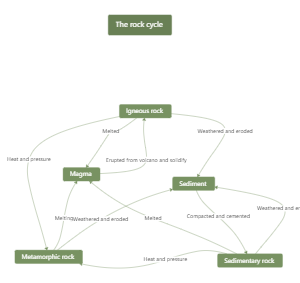MindMap Gallery Population Geography
- 381
- 1
- 1
Population Geography
This mind map is about Population Geography. Start to use a mind map to express and organize your ideas and knowledge right now.
Edited at 2020-09-28 09:27:37- Wholesaling Blueprint - Steps to Wholesaling Real Estate Simple Systems
This mind map is about Wholesaling Blueprint - Steps to Wholesaling Real Estate + Simple Systems. Start to use a mind map to express and organize your ideas and knowledge right now.
- Western Front
This mind map is about Western Front. Start to use a mind map to express and organize your ideas and knowledge right now.
- THE SAMPLING PROCESS
This mind map is about THE SAMPLING PROCESS. Start to use a mind map to express and organize your ideas and knowledge right now.
Population Geography
- Wholesaling Blueprint - Steps to Wholesaling Real Estate Simple Systems
This mind map is about Wholesaling Blueprint - Steps to Wholesaling Real Estate + Simple Systems. Start to use a mind map to express and organize your ideas and knowledge right now.
- Western Front
This mind map is about Western Front. Start to use a mind map to express and organize your ideas and knowledge right now.
- THE SAMPLING PROCESS
This mind map is about THE SAMPLING PROCESS. Start to use a mind map to express and organize your ideas and knowledge right now.
- Recommended to you
- Outline
Population Geography
Introduction Lesson
Outcomes covered - P1,P4 and P8
In this lesson students will learn about a general overview of what this unit will be about and they will be introduced to the important topics and definitions
Students will watch National Geographic Videos on World Population
http://www.youtube.com/watch?v=sc4HxPxNrZ0 and http://www.youtube.com/watch?v=A_Uj-ImxTYk
Students are introduced to the units big question . "how and why is the distribution of the world's population changing? "
Changing nature, rate and distribution of the worlds population
Outcomes covered P1, P3 and P8
Students will explore the United Nations website regarding population and write a summary of the article or report they have read . - http://www.un.org/esa/population/unpop.htm
Students will learn to identify geographical methods useful to the workplace such as applying information technology such as the internet to understand population change
Spatial patterns of fertility and mortality
Outcomes covered P1,P3,P4,P8
Students will be given handouts that include mortality figures from different countries across the globe. They will then be asked to analyse these tables and draw conclusions from past research and provide a reason for these figures
Students will then mark each others conclusions and make any corrections
Population movements
Outcomes covered- P1, P3,P4 and P9
Students will learn about rural-urban migration, labour migration and refugee migration
Students are to watch these videos and take detailed notes - http://www.youtube.com/watch?v=lOZmqIwqur4 - http://www.youtube.com/watch?v=hcoOENLfpUI
Students then will be run through a mapping exercise which will show them global patterns of population distribution and migration. A SmartBoard will be used by the teacher to draw major migration patterns.
Issues arising from the changing size and distribution of population
Outcomes covered - P1, P4,P5,P8,P12
Students will learn to calculate population density of a chosen area using a map
Students will learn about the environmental, economic and social impacts
Concluding Lesson
Outcomes covered - P1, P4, P5,P7, P12
Students will be asked to give an extended response of 500 words. Answering the question that was asked in the first lesson " how and why is the distribution of the worlds population changing?"
Students will revise the content and the use of geographical tools
With the world just reaching 7 billion people , population geography is becoming increasingly important and is one of the major geographical issues facing the planet. This unit of work includes looking at the changing nature, rate and distribution of population, spatial patterns of fertility and mortality, population movements and finishing off with issues surrounding the changing size and distribution of population. The entire unit revolves around the question of "how and why is the distribution of the worlds population changing? " This mindmap is an outline of the unit of work and you should refer to it as a guide
This unit will include a focus on ICT
P1 differentiates between spatial and ecological dimensions in the study of geographyP4 analyses changing demographic patterns and processesP5 examines the geographical nature of global challenges confronting humanityP6 identifies the vocational relevance of a geographical perspectiveP7 formulates a plan for active geographical inquiryP8 selects, organises and analyses relevant geographical information from avariety of sourcesP9 uses maps, graphs and statistics, photographs and fieldwork to conductgeographical inquiriesP10 applies mathematical ideas and techniques to analyse geographical dataP12 communicates geographical information, ideas and issues using writtenand/or oral, cartographic and graphic forms.
• calculating population density of a chosen area using a map• using information technology to collect and synthesise data relevant to ecologically sustainable development• estimating the scale of a given area from aerial photographs and satellite images to understand spatial patterns of natural resources use• orientating a photograph to a map of an urban area• interpreting frequency distributions and diagrams about access to food, shelter and educational opportunities for different groups.
• mapping global patterns of population distribution and migration• applying information technology such as the Internet to understand population change• the relevance of a geographical understanding of global challenges to a particular vocation such as: advising diplomats and politicians, practising journalism, participating in non-government organisations (NGOs), providing background information for tourist agencies and media outlets.









